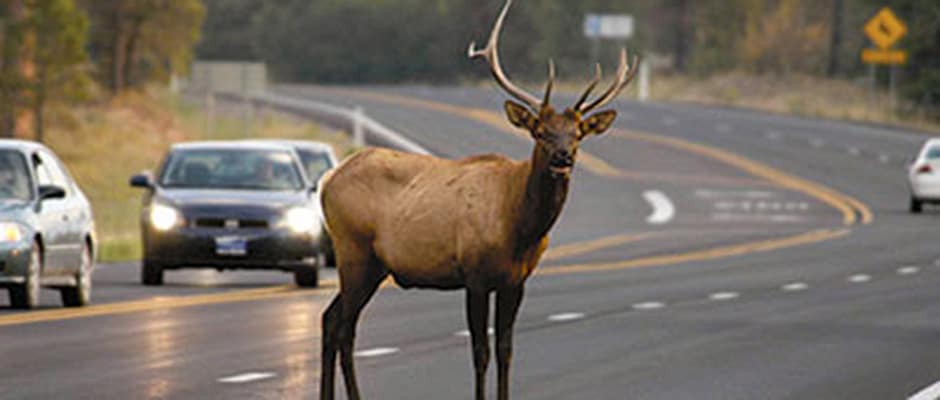Share this article
‘Tis the Season of Collisions
Fall may be the harbinger of death for wildlife — and not just because of hunting season. The number of motor vehicle collisions with wild animals peaks during the fall months, according to a 2008 U.S. Department of Transportation report.
“There’s a lot of animal movement this time of year,” said Paul Wagner, a transportation biologist for Washington State Department of Transportation (WSDOT). For many species, such as elk and deer, fall is the time for finding mates and evading hunters. Large mammals are also travelling from summer ranges to winter ranges — a journey that may take them across busy interstates and highways.
These intersections can be dangerous for humans and wildlife alike. In Washington, drivers report more than 1,100 car accidents involving wildlife every year, though WSDOT maintenance workers remove about three times that number of deer and elk carcasses from roadsides. But some collisions may go undetected making these estimates low, explained Wagner. Scavengers could ravage carcasses rendering them unidentifiable, collisions could launch animals into bushes or ditches where maintenance workers are unlikely to find them, not to mention the damage a collision could inflict on smaller animals such as toads or snakes.
“A lot of small animals — if they’re birds, small mammals, amphibians — can get hit on the roadway and get completely obliterated,” said Wagner. Because of this, it is nearly impossible to quantify the impact collisions may have on all wildlife populations.
But for identifiable animals, usually deer and elk, their grisly fate may help biologists protect these species. When WSDOT maintenance workers remove a dead animal from the side of the road, they identify its species (when possible) and record its location. The data gives scientists information about which animals were hit where, which in turn helps transportation biologists locate sections of roadway where wildlife and motor vehicle collisions are more frequent. Biologists then overlay that information with habitat maps and migration corridors to determine priority areas.
Once wildlife managers identify these areas, they can create site-specific strategies to reduce the risk of collisions while keeping habitat and corridors connected for the wildlife. One common strategy involves rerouting wildlife, said Wagner. Fences can keep wildlife off roads and encourage migrating deer to funnel through existing bridges, overpasses, or underpasses, making road trips safer for all.
Header Image: Image Credit: Federal Highway Administration








